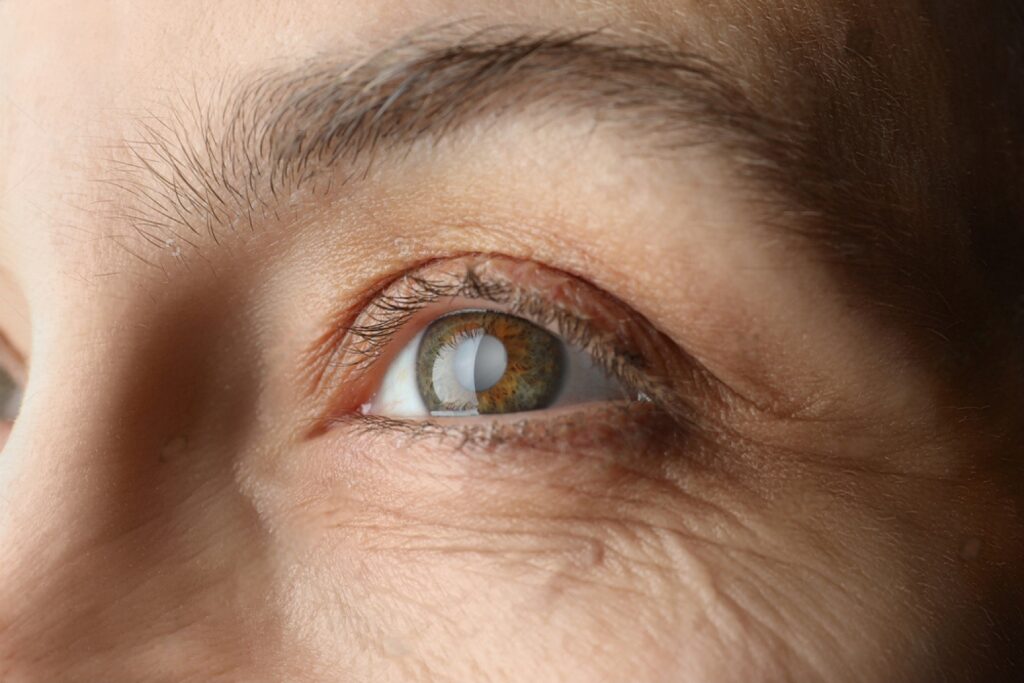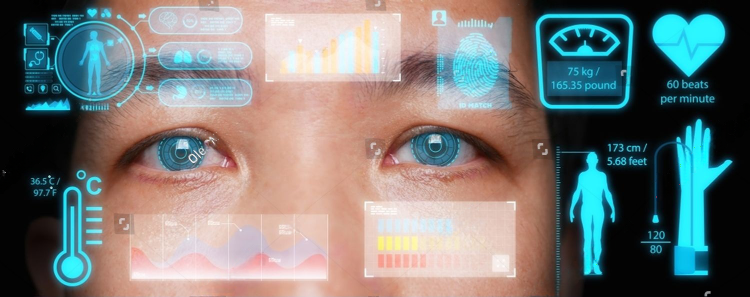In recent years, the boundaries of what contact lenses can achieve have expanded far beyond traditional vision correction. Researchers and innovators are developing smart contact lenses equipped with microelectronics and sensors that can monitor various health parameters in real-time. These lenses represent a significant leap forward in non-invasive diagnostics and continuous health monitoring, with the potential to revolutionise the field of ophthalmology and beyond.
Smart Contact Lenses and Glucose Monitoring
One of the most promising applications of smart contact lenses lies in their ability to monitor glucose levels in tears. This approach could provide a non-invasive alternative to the frequent blood tests currently required for diabetes management.
A recent study published in Nature Communications explored the potential of these lenses to continuously measure glucose concentrations in tear fluid, which is considered a less invasive medium than blood. The study addressed previous concerns about the reliability of tear glucose as a biomarker by considering the personalised lag times between tear glucose and blood glucose levels, thereby improving the accuracy of the monitoring. The lenses are designed to transmit this data wirelessly to a smartphone, allowing for real-time tracking and alerts, which could significantly improve the management of diabetes and reduce the burden on patients.
Early Detection of Glaucoma Through Continuous Monitoring
Another groundbreaking application of smart contact lenses is in the early detection and continuous monitoring of glaucoma, a leading cause of irreversible blindness. Glaucoma is often detected through a single intraocular pressure (IOP) measurement during an eye exam, but this snapshot approach can miss fluctuations in pressure that occur throughout the day.
To address this, researchers have developed a prototype smart contact lens that can monitor IOP continuously, even accounting for variations in temperature that can affect accuracy. This technology, as reported in a study published in ACS Applied Materials & Interfaces, uses a dual-circuit system embedded within the lens. The circuits detect minute changes in eye pressure, and the resulting data is transmitted wirelessly to an external receiver. In laboratory tests, the lens demonstrated the ability to provide accurate readings across a wide range of temperatures, a critical feature given the varying environmental conditions the human eye experiences. This innovation could lead to earlier detection of glaucoma and more effective disease management, potentially preventing vision loss for millions of people worldwide.

The Cutting-Edge Technology Behind Smart Contact Lenses
The development of smart contact lenses is a complex and challenging process, requiring the integration of advanced materials and microelectronics into a wearable, biocompatible device. These lenses are typically made from hydrogels, which are comfortable for long-term wear and can house the tiny sensors and circuits needed for health monitoring.
For example, the lenses designed for glucose monitoring utilise biosensors that react with glucose molecules in tears, triggering a measurable change in the lens’s properties. Similarly, the glaucoma-detecting lenses incorporate spiral circuits that respond to changes in eye pressure by altering their vibrational frequency. These vibrations are then converted into electronic signals and transmitted wirelessly to a receiver. Despite the technical challenges, significant progress has been made, bringing these innovations closer to clinical application.
Looking to the Future: Augmented Reality and Beyond
While smart contact lenses for health monitoring are already on the horizon, the future holds even more exciting possibilities with the development of augmented reality (AR) contact lenses. These lenses could overlay digital information onto the real world, potentially transforming not just medical care but also how humans interact with technology.
AR contact lenses are still in the experimental stage, but the potential applications are vast. In healthcare, they could provide visual aids during surgery, offer real-time health data directly to patients, or even assist in the treatment of conditions like diabetic retinopathy by integrating drug delivery systems. Beyond healthcare, AR lenses could revolutionise fields such as entertainment, education, and communication by enabling immersive experiences without the need for bulky headsets or glasses.
However, creating functional AR contact lenses poses significant challenges. The technology requires miniaturising screens, processors, and power sources to fit within the confines of a contact lens, all while ensuring safety and comfort for the wearer. Companies like Mojo Vision have made headlines with their prototype lenses, which feature micro-LED displays and wireless communication capabilities, but these innovations are still in the early stages of development. The path to widespread adoption of AR contact lenses will likely be long, requiring further advancements in materials science, optics, and microelectronics.
The Dawn of New Technologies in Ophthalmology
As the development of smart and AR contact lenses progresses, the potential to revolutionise eye care becomes increasingly apparent. These lenses could provide unprecedented tools for early disease detection, continuous monitoring, and potentially even direct treatment delivery, transforming how eye health is managed and improving patient outcomes.
In the near future, smart contact lenses may become an essential part of the toolkit for managing chronic conditions like diabetes and glaucoma. Meanwhile, the integration of AR technology into contact lenses could open up new possibilities for patient care, education, and beyond, making the once-futuristic concept of bionic eyes a tangible reality. As these technologies transition from the lab to clinical practice, they offer exciting opportunities to redefine what is possible in the field of ophthalmology and beyond.
References
- American Chemical Society. (2024). ‘Smart’ contact lenses could someday enable wireless glaucoma detection. ACS Applied Materials & Interfaces. Accessed August, 2024. Available at: https://www.acs.org/pressroom/presspacs/2024/may/smart-contact-lenses-could-someday-enable-wireless-glaucoma-detection.html
- Kazanskiy NL, Khonina SN, Butt MA. Smart Contact Lenses-A Step towards Non-Invasive Continuous Eye Health Monitoring. Biosensors (Basel). 2023;13(10):933. Published 2023 Oct 18. doi:10.3390/bios13100933
- Park W, Seo H, Kim J, et al. In-depth correlation analysis between tear glucose and blood glucose using a wireless smart contact lens. Nat Commun. 2024;15(1):2828. Published 2024 Apr 2. doi:10.1038/s41467-024-47123-9
- XR Today. (2024). Augmented Reality Contact Lenses: Will They Ever Be a Reality?. Accessed August 2024. Available at: https://www.xrtoday.com/augmented-reality/augmented-reality-contact-lenses-will-they-ever-be-a-reality/
About Docquity
If you need more confidence and insights to boost careers in healthcare, expanding the network to other healthcare professionals to practice peer-to-peer learning might be the answer. One way to do it is by joining a social platform for healthcare professionals, such as Docquity.
Docquity is an AI-based state-of-the-art private & secure continual learning network of verified doctors, bringing you real-time knowledge from thousands of doctors worldwide. Today, Docquity has over 400,000 doctors spread across six countries in Asia.
Meet experts and trusted peers across Asia where you can safely discuss clinical cases, get up-to-date insights from webinars and research journals, and earn CME/CPD credits through certified courses from Docquity Academy. All with the ease of a mobile app available on Android & iOS platforms!







